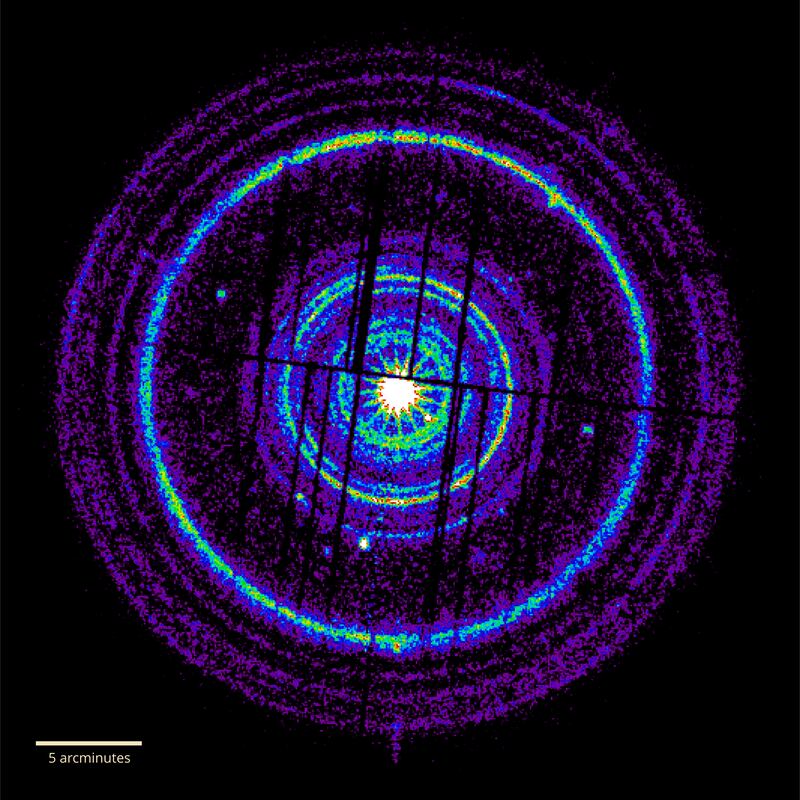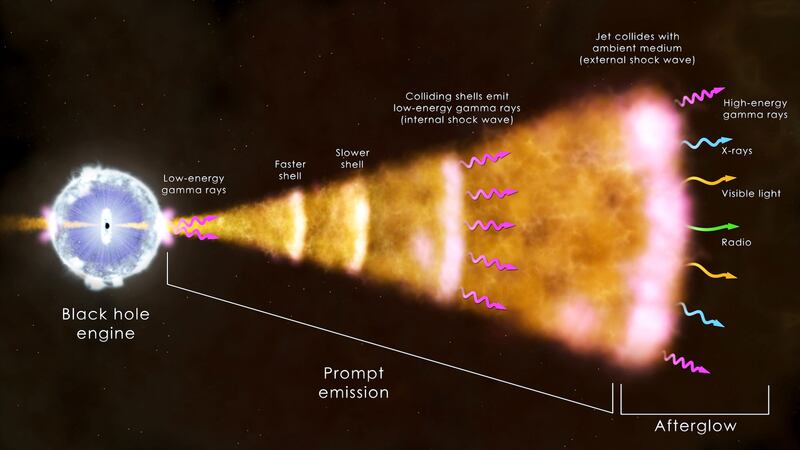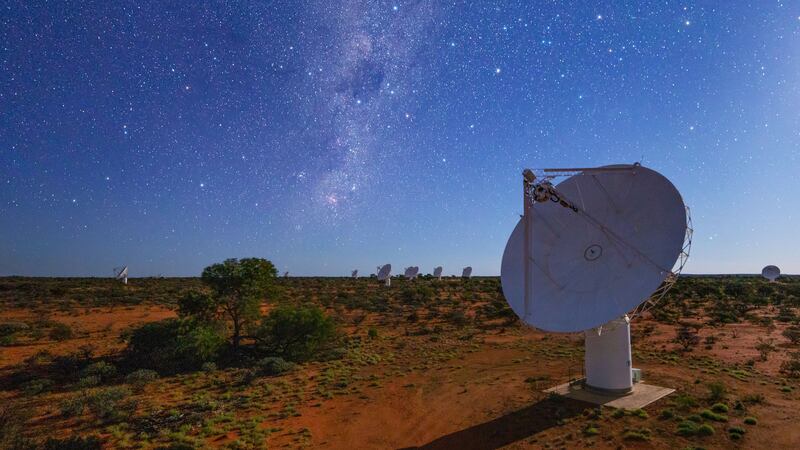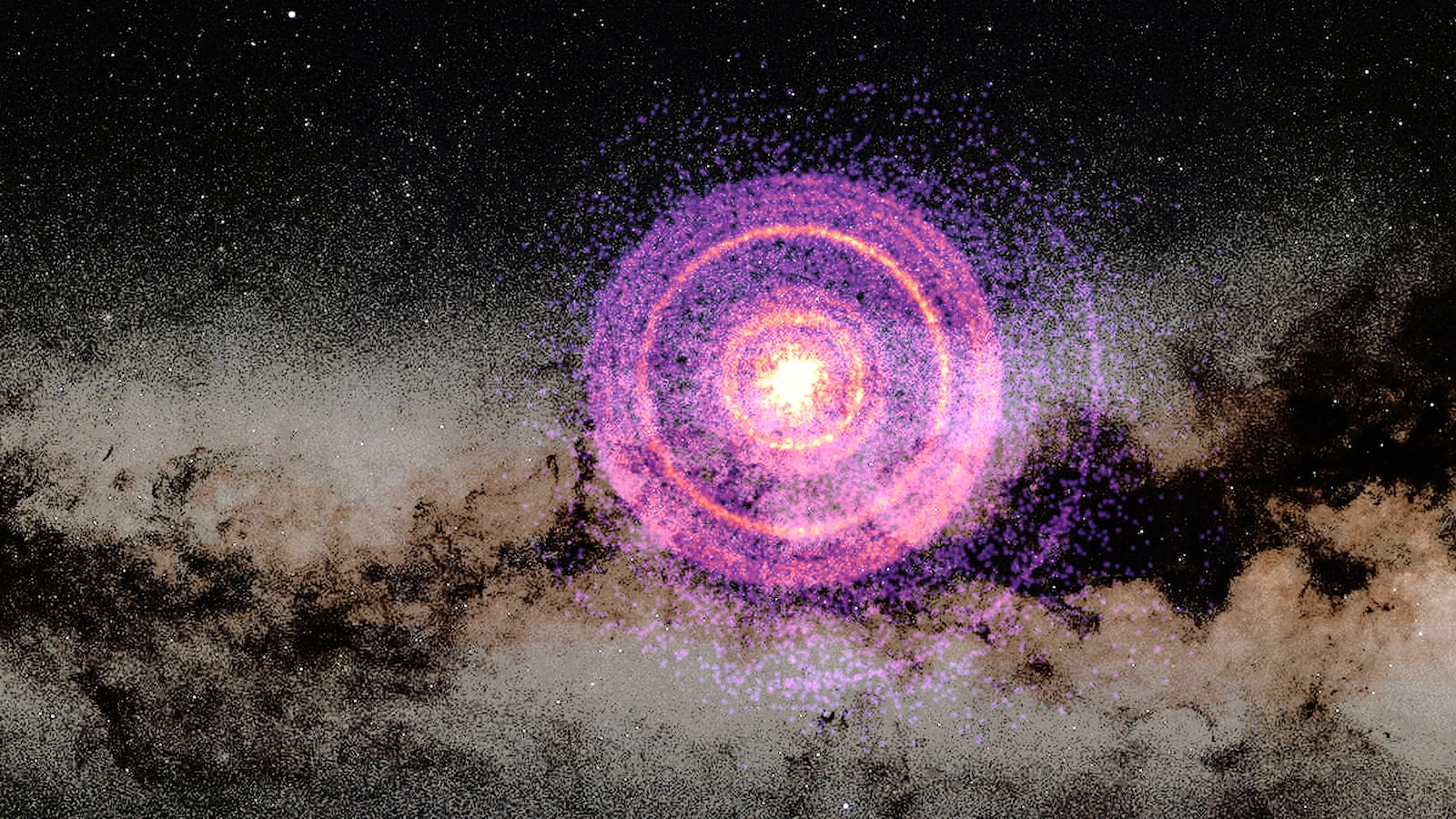Last October, astronomers notched another record for the books when they observed the brightest-ever gamma ray burst ever seen, which released an explosion that traveled over 1.9 billion light-years to sweep through the solar system. A follow-up investigation unveils new secrets about the explosion in unprecedented detail—giving scientists a better understanding of what happened and how such an event rollicked through space.
The gamma ray burst “gave us a golden opportunity to test intricate physical models that describe what happens before, during and after the death of a star,” James Leung, a PhD student at the University of Sydney and a co-author of the new study, said in a statement. The study was published Mar. 28 in The Astrophysical Journal Letters.
Gamma ray bursts are the brightest phenomenon in the known universe. They’re among the last high-energy bellows of gigantic stars that are en route to collapsing into black holes, released in all directions.

At the time of its detection, this particular gamma ray burst, called GRB 221009A and affectionately nicknamed BOAT, was the brightest ever recorded. It was so bright that it effectively blinded most space-based instruments capable of detected gamma rays. What that meant was scientists couldn’t measure the actual intensity of the event. They just knew it was off the charts—a one-in-10,000-year event.
The new study pieced together missing data collected from a slew of other space- and ground-based instruments, capable of observing phenomena at longer wavelengths across the electromagnetic spectrum. That includes the vaunted afterglow that gamma ray bursts leave behind, produced by a forward shock of material ejected by the burst itself as well as a reverse shock that is reflected back into the ejected material.

“One of the fascinating things about gamma ray bursts is, although they are over quite quickly—in just a matter of seconds—they leave afterglow emissions across the light spectrum in surrounding matter that echo for months and years afterwards,” Tara Murphy, the head the school of physics at the University of Sydney and a co-author of the new study, said in a statement.
The team’s insights are quite complex for non-astrophysicists. But the gist of it is that the reverse shock physics from the gamma ray burst provide new insight into how gamma ray bursts are produced and move through the universe, which could eventually help astronomers better understand what the collapse of large stars into black holes really looks like.

The CSIRO ASKAP telescope in Western Australia.
Alex CherneyAnd the new data could eventually help astronomers predict what kind of stars are most likely to produce gamma ray bursts and allow us to observe the process unfold in real-time. There is an acute chance a gamma ray burst that occurs relatively close to Earth could inflict damage that knocks out terrestrial electronics or affects the atmosphere in threatening ways. (Emphasis on acute.) Luckily, we’re safe from any gamma-ray-induced apocalypse… for now that is.






